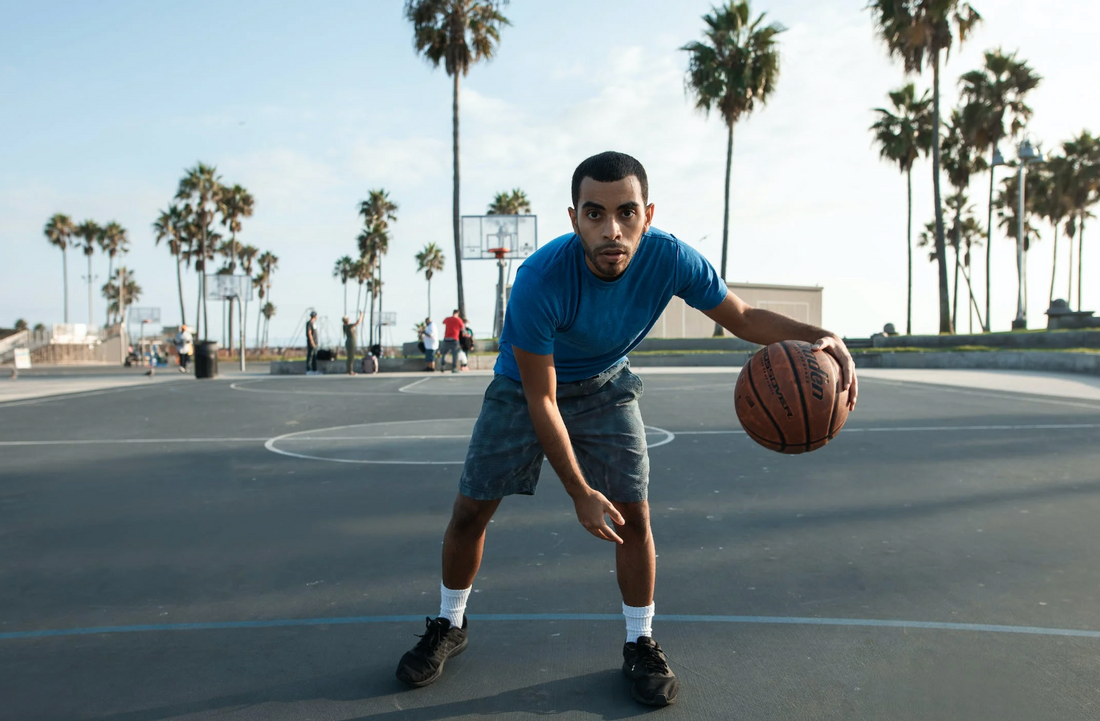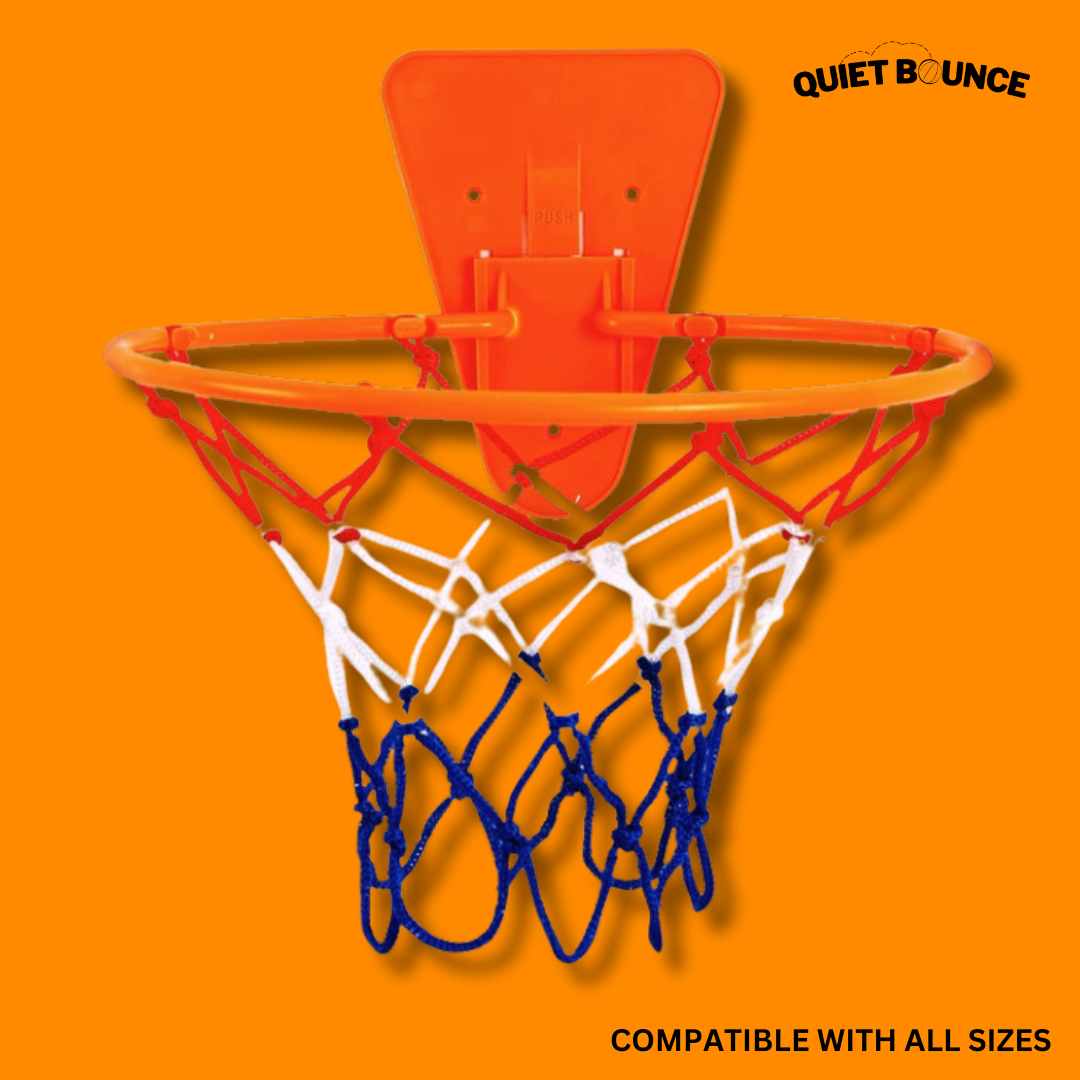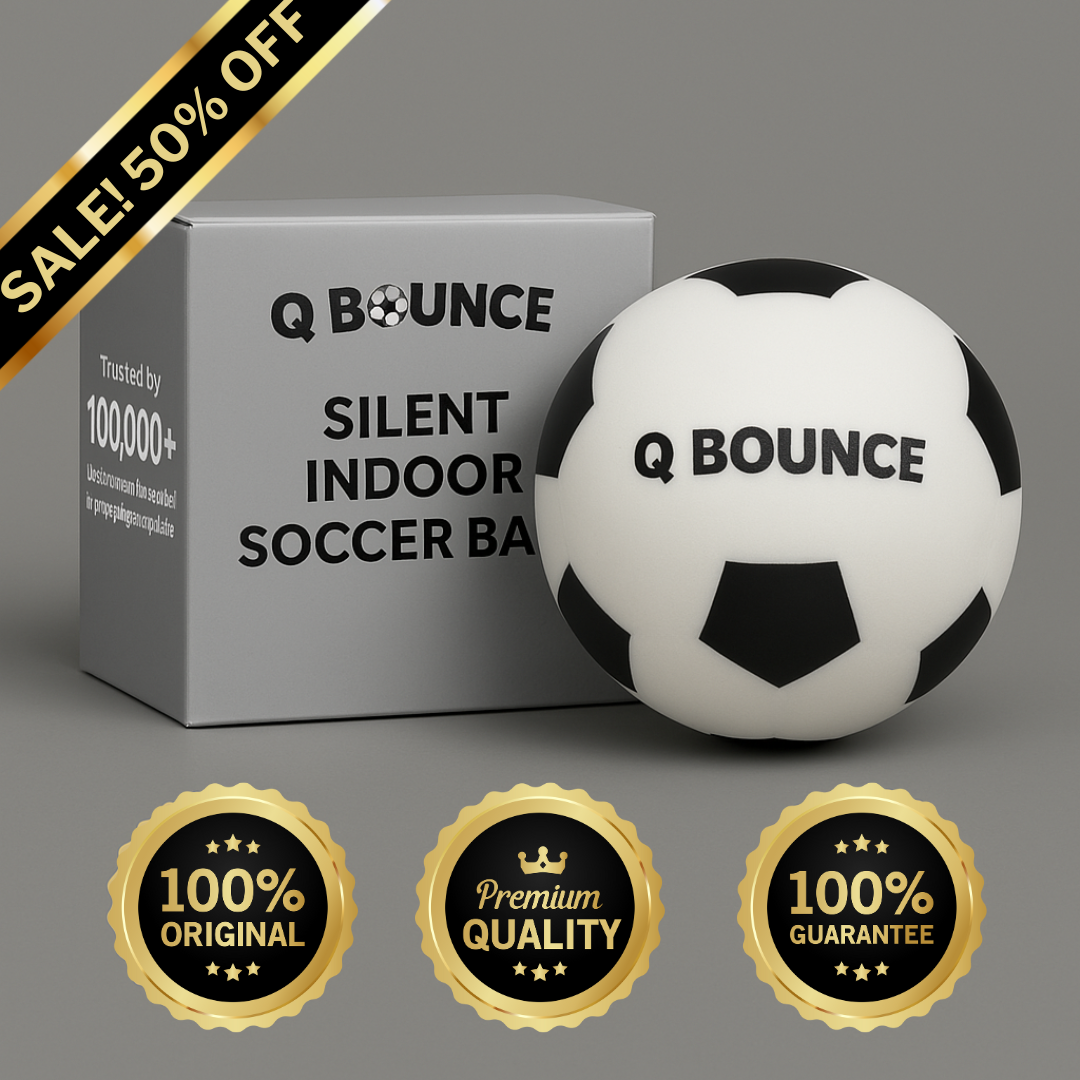
How to Get Better at Dribbling a Basketball with Your Non-Dominant Hand
Share
As much as we’d all like to believe otherwise, most basketball players aren’t ambidextrous. But with the right training, you can get better at dribbling with your non-dominant hand. And in a few weeks, you’ll blow past defenders and create open shots that were previously inaccessible.
Right now, you may feel a lack of control and coordination, causing you to avoid using your weak hand altogether. If this sounds familiar, then you're not alone. Most young players (and even some NBA players) struggle with their non-dominant hand. But once you master it, you’ll take your game to an entirely new level.
Ready to step up your game? Let’s start training that weak hand.
Why You Need to Dribble With Both Hands
Dribbling with both hands is a fundamental aspect of basketball. And if you hope to play on your high school varsity team, in college, or even professionally, it’s a must-have skillset. Here’s why:
1. Increased Versatility and Adaptability
Being able to dribble effectively with both hands makes you a more versatile player. It allows you to navigate through defenders, change directions, and execute twice as many offensive moves as someone who can’t use their weak hand very well. By developing your non-dominant hand dribbling, you become a more adaptable player, capable of handling different game situations and adjusting to defensive pressure. And oftentimes, this leads to more points, assists, and playing time.
2. Improved Ball Control and Confidence
If you’re comfortable dribbling with both hands, you’ll be far less likely to get trapped by double teams or turn the ball over with a travel or double dribble. Plus, you can open up the floor for yourself & teammates, creating more scoring opportunities. Your teammates & defenders will take notice of this, making you a threat all over the court. Coupled with your new-found composure, you’ll make decisions and plays that help you win more games.
3. Enhanced Offensive Threat
When you can dribble proficiently with both hands, you become a more dangerous offensive threat. Defenders will have a harder time predicting your moves and defending against you. You can drive to the basket from either side, execute crossovers and spin moves, and create scoring opportunities for yourself and your teammates. Developing your non-dominant hand dribbling skills expands your offensive arsenal and makes you a more difficult player to guard.
4. Better Passing Opportunities
One-hand passes are great for pick and rolls & narrow lanes. But if you only feel comfortable throwing them with your dominant hand, you’re missing out on playmaking opportunities. As your weak hand dribbling improves, you’ll open up passing opportunities that would otherwise be limited with only your dominant hand. You’ll even be more accurate with weak hand passes, giving you the ability to throw cross-court, pocket, and bounce passes.
5. Overcoming Defensive Pressure
Skilled defenders apply constant pressure to disrupt an opponent's dribble, sometimes picking you up for a full-court press. If you rely solely on your dominant hand, you’re extremely vulnerable to defensive traps and steals. But if you’re able to handle the ball with your left hand, or right if you’re a lefty, you can break full-court presses and defensive traps much easier. Especially in the final two minutes of a game, when the pressure is on, you can escape tight defenses and create plays for yourself and your teammates.
Now, onto the dribbling tips themselves…
Tips to Improve Your Dribbling Skills for Your Weak or Non-Dominant Hand
Improving your weak or non-dominant hand dribbling skills requires consistent practice, even when you’re not holding a basketball. Here are our favorite tips & techniques that will improve your left (or right) hand dribbling skills:
Regularly Dribble with Both Hands
This should be obvious, but you’ll never feel comfortable dribbling with your weak hand if you don’t practice daily. Just like when you go to the gym, you need to exercise both sides of your body, or in this case, both hands. Whenever you perform a dribbling drill, whether it be with cones, chairs, or live defenders, make sure to repeat it on both your left & right hands. Focus on maintaining control, dribbling low, and using proper hand positioning. Use the same body position, speed, and dribbling form on both hands.
Pass With Your Weak Hand
Another effective way to enhance your non-dominant hand dribbling is to practice passing with your weak hand. It may seem unconventional at first, but it will improve your overall comfortability with using your non-dominant hand. And as a bonus, you’ll be able to throw passes with both hands, opening up lanes and creating shots that were previously unavailable to you.
Wear Dribbling Glasses
Dribbling glasses are specialized eyewear that restricts your vision while dribbling. They prevent you from looking at the ball while you’re dribbling, forcing you to rely more on your peripheral vision and feel the ball better. If you have to look at the ball while you dribble with your weak hand, you can’t see the defenders, your teammates, or the basket. Wear these for all of your dribbling drills and even in practice sessions to enhance your overall ball control and court vision.
Get Extra Reps at Home
To accelerate your progress in weak hand dribbling, take advantage of the time you spend at home. Dribble the basketball with your non-dominant hand while watching TV or listening to music. This extra practice will reinforce muscle memory and improve your ball handling skills. Sure, dribbling a basketball inside can be loud, so make sure to use a quiet basketball to keep the noise down. If you have a driveway or cul-de-sac to practice in, make sure to practice with an outdoor basketball – it won’t wear down as quickly.
Practice Weak-Hand Layups & Stationary Shots
Dribbling with your weak hand will help you get to the rim more often. But if you can’t also finish with your left or right hand, then you’ll struggle to score. Add weak-hand layups and stationary shots to your training routine. Focus on using your non-dominant hand to finish around the rim and shoot from various spots on the court. You’ll notice that your “touch” on the ball will begin to improve, making it feel as though you don’t have a “weak” hand near the rim.
Use Your Non-Dominant Hand for Non-Basketball Tasks
You don’t always need a hoop to practice your basketball skills. An unconventional yet effective way to improve your weak hand dribbling is by using your non-dominant hand for everyday tasks. Brush your teeth, eat, write, and perform other everyday activities with your non-dominant hand. This helps develop the muscles and coordination necessary for better dribbling control. The more you use your non-dominant hand in daily life, the more comfortable you will become with using it on the basketball court.
By implementing these tips and techniques into your training regimen, you can steadily improve your weak/non-dominant hand dribbling skills. Remember, consistency and patience are key. With dedicated practice, even as a total beginner, you will be well on your way to becoming a more well-rounded and effective basketball player with the help of Quiet Bounce.




